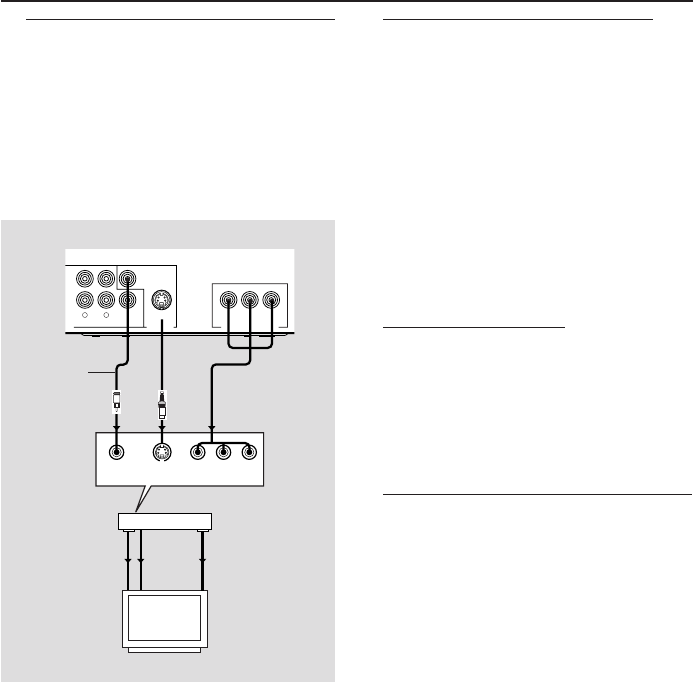
6
Preparation
Video Connections
If your AV receiver has video output jacks,
connect your receiver (and then to your TV) so
that you can use one TV for several different
video sources (LD, VCR etc.) by simply switching
the input source selector of your receiver.
The player has three types of video output jacks.
Use one of them in accordance with the input
jacks of the equipment to be connected.
1
2
VIDEO
SUBWOOFER
O
UT
VIDEO OUT COMPONENT VIDEO OUT
S VIDEO
P
R
P
B
R
L
Y
VIDEO
OUT
VIDEO
IN
COMPONENT
VIDEO OUT
COMPONENT
VIDEO IN
S VIDEO
OUT
S VIDEO
IN
COMPONENT
VIDEO IN
S VIDEO
INPUT
VIDEO
YP
B
C
B
P
R
C
R
V
S
<A><B><C>
AV receiver
(supplied)
Component Video terminal <A>
Component video connection achieves high
fidelity in reproducing colors (better
performance than S-video connection),
separating video signal into luminance (Y,
terminal color-coded as green), and color
difference (Pb, blue/Pr, red). Use commercially
available coaxial cables. Receiver (and TV) with
component input is required. Observe the color
of each jack when connecting. If your receiver
does not have component output jacks,
connecting the player’s component output
directly to your TV’s component input can
reproduce better video image.
S-Video terminal <B>
S (separate) video connection achieves a clearer
picture than composite video connection by
separating color and luminance when
transmitting signals. Use commercially available S-
video cable. Receiver (and TV) with
S-video input is required.
Composite Video terminal (1, 2) <C>
Use audio/video cable supplied with this unit
when connecting the player to a TV.
VIDEO 1, 2 jacks of VIDEO OUT output the
same signal. You can connect one to your
receiver’s input using supplied Audio/Video cable,
and the other to another receiver or a TV.


















